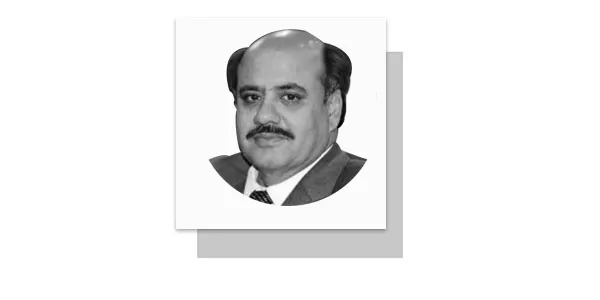The Russia-Ukraine war is dangerously spiraling since Donald Trump’s victory in the recent presidential election in the United States. The general impression is that Trump can curtail Kiev’s financial and material assistance. He will pressurize the European partners to bear the burden of the war, which they have already shouldered since the beginning of the war in February 2022. The Biden administration has decided to esca-late the war and wear down Russia’s war-fighting potential to increase the bargaining options for Ukraine if Trump 2.0 decides to engineer a cease-fire between Russia and Ukraine.
The Biden administration provided and permitted Ukraine to use MGM-140 Army Tactical Missile Systems—colloquially known as the ATACMS against Russia after the general elections in the United States in November 2024. Notably, after the tri-umph of Trump, the Biden administration permitted Kyiv to use ATSCMS and British missiles against Russia. The Kremlin fired a newly tested Oreshnik—a hypersonic medium-range missile containing multiple independently targetable reentry vehicles in retaliation. Besides, the Russians announced the shift in their nuclear posture.
President Vladimir Putin announced the modification of the nuclear doctrine on No-vember 19, 2024. The changes in the Kremlin’s nuclear doctrine have lowered the nu-clear threshold. Indeed, Putin’s nuclear signaling is not a bluff. It is grounded on a fundamental pillar of deterrence theory dating back to the heyday of the Cold War: “Threats that leave something to chance and force the adversary to face potentially uncontrollable risks that entail unacceptable costs.” Thus, with nuclear signaling, the Kremlin successfully prevented Western powers’ direct intervention in the war to re-pel Russian forces. However, during the last month, the Americans and Britishers have altered their restraint strategy and provided and permitted the use of missiles to Ukraine to strike Russian military assets. Indeed, the shift in strategy will raise the intensity of the war and increase the likelihood of using nuclear weapons by the Kremlin.
Another alarming news is that the Ukrainians possessed the capability of manufactur-ing and firing dirty bombs. A dirty bomb or a Radiological Dispersal Device (RDD) is an ordinary conventional explosive device wrapped around radiological material. RDD does not have any critical mass and does not result in any nuclear explosion. Their size and destructive yield depend upon the quantity of the radioactive material and the power of the conventional explosive. Nevertheless, the use of RDD against the Russian military formations or civilians causes disruption. Russians had mani-fested their response to the RDD use of the Ukrainian. Bob Woodward wrote in his new book, War, that then-Russian Defense Minister Sergei Shoigu said to Defense Secretary Llyod Austin: “If they do this, we would consider it an act of nuclear terror-ism and we’d have no alternative but to respond.” Putin’s saber-rattling has reinvigorated global fears of nuclear use in the war. It is be-cause he cannot afford the defeat of the Russians in their backyard. Since the 2008 NATO Bucharest Summit, Putin has been struggling to keep hold of Moscow’s sphere of influence in Eastern Europe, which NATO has planned to encroach on by making Georgia and Ukraine full members of the alliance. The Kremlin surprised U.S.-led NATO by annexing two provinces of Georgia in 2008 and Crimea in 2014 and launching a military operation into Ukraine in February 2022. Presently, the Russians are controlling Crimea and four regions in eastern Ukraine.
Putin has justified his military operations against the neighbours, who were aspiring to join NATO, as a part of a historic struggle with the West which humiliated Russia af-ter the former Soviet Union’s demise in 1991. Putin’s assertive policy in the interna-tional geopolitics and military operation in Ukraine are counterproductive. They have expanded and consolidated NATO. Finland and Sweden joined NATO, which enabled the alliance to deploy its forces at the 750 km Finland border with Russia. Simultane-ously, it multiplied the European’s insecurity, entailing a colossal increase in their de-fense spending. For instance, immediately after the Russian military operation in Ukraine, the Germans quashed their détente with Russia and also announced an in-crease in their defense budget. Moreover, in July 2024, Berlin announced the NATO missile base in Germany. The remilitarization of Europe after the end of the Cold War supplements the U.S. military buildup and reboots the military-industrial complex. To conclude, the escalation in the Ukrainian War is a bad omen for European economic prosperity; it favours NATO legitimacy and the U.S. international strategic policy.
—The writer is Prof at the School of Politics and IR, Quaid-i-Azam University.








